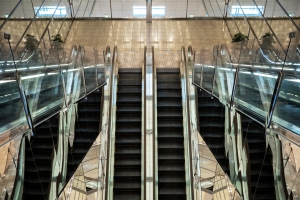Transport everyone
Pdf downloadWith the return to school and back to work, the demand for public transport increases considerably.
Thousands of people depend daily on buses, trains and subways to reach their destinations.
Stainless steel, thanks to its resistance to corrosion and wear, ensures that transport infrastructures can handle the intensive use throughout the year.
Do you know where stainless steel is found?
The stainless steel can be found in multiple applications:
- Handrails: during journeys, it is common for passengers to hold on to handrails to keep their balance. These components, made of stainless steel, are not only durable, but also easy to clean and maintain, which is essential to ensure safety and hygiene in a high-traffic environment.
- Non-slip surfaces: stairs and floors in metro stations and buses are often coated with textured stainless steel, which provides a non-slip surface. This reduces the risk of accidents, especially on rainy days.
- Wall and column cladding: stainless steel adds a modern and elegant touch to the stations where it is located, creating a pleasant environment that contributes to the comfort of passengers.
- Ticket machines, turnstiles, benches and bus shelters: this material is easy to clean and resists vandalism, keeping public transport in top condition for all users.
Many kinds of public transport have adopted stainless steel in their designs to create a contemporary and attractive image. Its use also extends to bus and metro car structures, enhancing the travel experience, promoting safety and the use of public transport.
Choosing public transport instead of private vehicles not only relieves traffic congestion, but also reduces pollutant gas emissions. Stainless steel, being recyclable, contributes to this mission by minimising the environmental impact of its production and life cycle.




